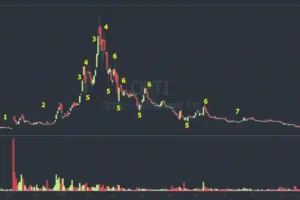In the world of cryptocurrency, arbitrage opportunities offer traders a way to make low-risk profits by exploiting price differences across exchanges. Ethereum, being one of the most traded assets, presents great potential for arbitrage. If you’re tech-savvy or looking to learn how to automate your trading strategy, this Ethereum arbitrage bot tutorial is your step-by-step guide to maximizing gains with code.
What is Ethereum Arbitrage?
Arbitrage is a trading strategy that involves buying an asset at a lower price on one exchange and simultaneously selling it at a higher price on another. For example, if Ethereum is priced at $3,100 on Exchange A and $3,120 on Exchange B, you can buy on A and sell on B, pocketing the $20 difference minus fees.
In crypto, arbitrage exists because of the decentralized nature of exchanges, varying liquidity levels, and latency in price updates. These inefficiencies make arbitrage bots a valuable tool.
Why Use an Ethereum Arbitrage Bot?
Manually executing arbitrage trades is nearly impossible because of the speed required. That’s where Ethereum arbitrage bots come in. These bots monitor prices across multiple exchanges in real time, execute trades instantly, and can operate 24/7 without fatigue.
Benefits of using a bot:
- Speed and efficiency
- Reduced emotional trading
- 24/7 market coverage
- Ability to scan multiple exchanges and pairs at once
Prerequisites Before You Start
Before diving into coding your Ethereum arbitrage bot, make sure you have the following:
- Basic programming knowledge (preferably Python or JavaScript)
- Familiarity with cryptocurrency exchanges and APIs
- Accounts on multiple crypto exchanges (e.g., Binance, Coinbase, Kraken)
- API keys and permissions for trading and balance access
- Some ETH or stablecoins for testing your bot in a live or test environment
Step 1: Choose Exchanges and Set Up APIs
Start by selecting two or more exchanges that support Ethereum and have reasonable liquidity. Examples include:
- Binance
- Coinbase Pro
- Kraken
- KuCoin
Once selected, generate API keys from their developer portals. Be sure to enable both read and trade permissions.
Step 2: Install Required Libraries
If you’re using Python, install the following packages:
bash
CopyEdit
pip install ccxt
pip install pandas
pip install requests
ccxt is a powerful library that supports over 100 exchanges with unified APIs, making it perfect for arbitrage bots.
Step 3: Write the Basic Bot Logic
Here’s a simplified structure of the bot in Python:
python
CopyEdit
import ccxt
import time
# Initialize exchanges
binance = ccxt.binance({
‘apiKey’: ‘your_api_key’,
‘secret’: ‘your_api_secret’
})
kraken = ccxt.kraken({
‘apiKey’: ‘your_api_key’,
‘secret’: ‘your_api_secret’
})
def get_eth_price(exchange):
ticker = exchange.fetch_ticker(‘ETH/USDT’)
return ticker[‘bid’], ticker[‘ask’]
while True:
binance_bid, binance_ask = get_eth_price(binance)
kraken_bid, kraken_ask = get_eth_price(kraken)
# Check arbitrage opportunities
if binance_ask < kraken_bid:
profit = kraken_bid – binance_ask
print(f”Buy on Binance @ {binance_ask}, sell on Kraken @ {kraken_bid} | Profit: ${profit}”)
# Place trade logic here
elif kraken_ask < binance_bid:
profit = binance_bid – kraken_ask
print(f”Buy on Kraken @ {kraken_ask}, sell on Binance @ {binance_bid} | Profit: ${profit}”)
# Place trade logic here
time.sleep(5)
This script checks ETH/USDT prices every 5 seconds and logs arbitrage opportunities. In a production bot, you’d include trading logic, balance checks, logging, and error handling.
Step 4: Handle Fees and Transfer Delays
Profits can quickly disappear due to fees and transfer times. Factor in:
- Trading fees (usually 0.1–0.3%)
- Withdrawal and deposit fees
- Network congestion and gas fees (especially on Ethereum)
A more advanced Ethereum arbitrage bot would ideally execute both trades simultaneously without transferring assets between exchanges—this is called triangular or statistical arbitrage.
Step 5: Test in a Safe Environment
Never run your arbitrage bot with large amounts of ETH right away. Start with:
- Testnet accounts (if supported)
- Small trades
- Paper trading mode (simulate trades without executing them)
Monitor the bot for at least a week to understand performance, market behavior, and potential bugs.
Step 6: Automate and Scale
Once you’re confident the bot performs well:
- Deploy it on a cloud server (AWS, Linode, DigitalOcean)
- Use cron jobs or a scheduling service to keep it running
- Add monitoring, notifications (via Telegram or email), and error logging
- Integrate more exchanges or assets for diversified arbitrage
Final Thoughts
Building an Ethereum arbitrage bot is an excellent way to learn coding, market dynamics, and algorithmic trading. While this tutorial covers the basics, there’s always more to explore—like machine learning-based prediction, smart contract-based arbitrage, or DeFi bots.
Keep in mind that markets evolve quickly, and arbitrage opportunities don’t last forever. Monitor your bot continuously, stay updated on exchange policies, and never invest more than you can afford to lose.
Summary
This Ethereum arbitrage bot tutorial has shown you the steps to automate ETH trading and capture small but consistent profits. With the right setup, coding skills, and risk management, arbitrage can be a rewarding strategy in your crypto journey.
















Add Comment